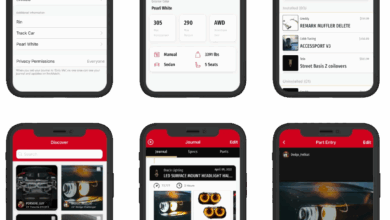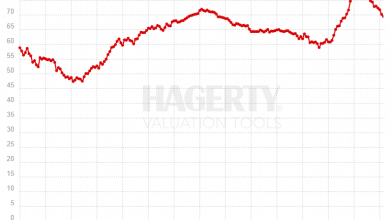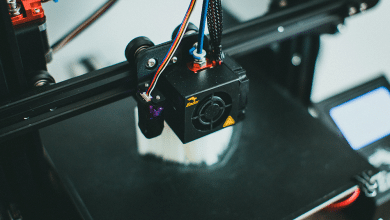Georgia Emissions for Car Enthusiasts

While most of us have been dealing with emissions annually for many years at this point, there remains a fair bit of nuance when it comes to emissions for car enthusiasts. Specifically as it relates to collectible cars and modded cars. There also is some nuance for pre-ODBII cars (any model before 1996). Finally, there is some gray area with some mid 90s car due to the timing of the switch over to ODBII.
Emissions Primer
If you are new to Georgia or have been doing 1 year leases of new cars since you got your license you are probably are not familiar with Georgia emissions. I’ll keep this short since it’s a small group.
Where do I have to have emissions?
In general all cars registered in one of the 13 core counties of metro Atlanta (Cherokee, Clayton, Cobb, Coweta, DeKalb, Douglas, Fayette, Forsyth, Fulton, Gwinnett, Henry, Paulding and Rockdale County) are subject to emissions testing annually.
Who is subject to emissions?
Cars are subject to emissions testing if the car is older than 2 model years old (starts with the third year). So that is 1996-2017 model years car for 2020. So if your car is 2018 or newer you don’t need emissions testing annually. But you will. There are some additional exemptions such as for seniors.
| Vehicle Model | Testing Required? |
| 1998 and older | No |
| 1999-2020 | Yes (in the 13 metro counties) |
| 2021-2023 | No (not until the car is 3 model years old) |
What about inspections?
Georgia. unlike many northern and atlantic coast states, does not have “inspections” like other states. Emissions is generally just that – emissions.
What other emissions requirements are there? What about those outside of metro Atlanta?
There are both state and federal emissions rules that technically apply to all vehicles. Georgia rules are generally simple but they do cover a number of common modifications made. While you can build a vehicle for race only, or simply install the parts only when you *ahem* plan to take it “controlled environment”, in any other instance these rules would apply.
- Vehicle must have a muffler (including no “cutouts” – even electronically operated)
- Nitrous Oxide (yes, NOS is technically illegal for streetcars)
In addition to the items in Georgia code there are federal laws on emissions. While they can be numerous (and this isn’t legal advice) the simplest one is that it is illegal to remove, modify or change a functioning emission device. This includes EGR valves, O2 sensors, cats, mufflers, exhausts or other other component of the emissions system. This law is rarely enforced and even more rarely followed. But don’t say we didn’t warn you.
Emissions for 1996+ Cars
ODB2
For all cars now, emissions is actually measured and reported by your cars ECU. This is read by emission software via a port called ODB2. Simply put ODB2 is just a standard port and ECU reporting system for emissions. While ODB2 was primarily installed to support emissions it’s actually used for most ECU communications, including dealer and aftermarket ECU flashes.
ODB2 ports greatly simplifies the rather lengthy and cumbersome process that use to exist for pre-ODB2 cars (see below if you want to read more). Also unlike pre-ODB2 cars where the cars actual emissions were tested, ODB2 doesn’t actually even monitor the direct output of your vehicle. What it actually reports is whether the various sensors are reading within spec and functioning correctly.
As the car is driven the emissions control equipment reads and monitors information. This is primarily done by the O2 senors, of which most modern cars have at least 2 but some have more depending on the number of cylinders your car has. The ECU will record any faults with any system in or impacted by emissions. This includes, but isn’t limited to: air flow sensor, temperature sensor, EGR, knock, O2 sensors.
When one of the sensors fails or reads out of spec, it will report “not ready”. At the emissions station the codes are all read and if any are “not ready” the test will fail. While most of the time a “not ready” code is legitimate there may be times it’s not. If you recently had to change or jump start your battery or haven’t driven in an extended period of time, for example, then your sensors may not have had enough time to collect data to report.
Most functioning cars will pass emissions and you will usually see a check engine light if your car has a problem with emissions equipment. However, for enthusiasts if you choose to modify your vehicle they may also have an impact on emissions. Knowing how, and how to avoid or resolve them, will avoid future problems.
Modifying/Modifications Impact
While most modifications will not impact emissions, a number relating to the engine or exhaust may. ECU flashes and tunes may also have an impact. Appearance, suspension and other similar modifications that do not involve the drive line or ECU generally will not.
The modifications that are most likely to impact emissions are:
- Headers/Down Pipes (for turbo charged cars)
- “Test” Pipes or other catalytic converter removal
- Exhausts (if they replace the cats)
- ECU flashes/maps/tunes
While a number of other “modifications” will say they are not emissions safe (like intakes and piping) on most cars they retain the factor sensors and generally do not cause you to fail emissions. They primarily have this as a disclaimer. That is a lot more vital in inspection states where those modifications are illegal.
Also “cat-back” exhausts generally will not impact emissions. While technically illegal, you generally will not fail emissions over it. However, if you attempt to have the exhaust put on at a non-enthusiast friendly shop they may balk at modifying a working emission control system. While not technically used in emissions testing, exhausts (including mufflers) are generally seen by mainstream shops as emission control devices.
If a mod you want to do does change/replace/eliminate an emissions control system it’ll usually involve eliminating the O2 sensors or changing the emissions control prior to the O2 sensors. Removing the cats by themselves are not monitored. However, the O2 sensors will quickly pick up more CO2 than normal and send up an error code.
Dealing With O2 Sensors
There are a few ways to fix the issue for your now “controlled environment use only” vehicle to eliminate that unneeded emissions control test that may annoyingly be causing a check engine light.
- Many aftermarket exhaust systems put the O2 sensor further back. This allows you to continue to get some readings for tuning and other uses, while limiting the amount of CO2 the sensor sees. This generally is enough to eliminate any unneeded “not ready” errors reported by the ECU. However, do note that you can’t explicit control how much CO2 it sees so you might see a check engine light at an unexpected time or intermittently. It may be rare, but something to consider. The higher quality the part, the more likely it was tested extensively and the less likely it will be an issue.
- Many ECU flashes will always report emissions systems “ready”. While clearing codes is only legal for controlled environment uses *wink* this ensures you will never see an unneeded or unexpected check engine light. Also, you can eliminate the O2 sensors all together behind the cats (or what is in their place now).
- Get “Simulated” O2 Sensors. There are a number of products on the market that wire in where the rear O2 sensors were. They then send a consistent signal of the right reading. Again, this would avoid any chance of an accidental check engine light coming on for you “controlled environment only” vehicle.
If your check engine light is caused by other factors besides O2 sensors then it may be a legitimately an emissions problem.
Collectors Cars/Older Cars
If you didn’t have the pleasure of having pre-ODB2 emissions in Georgia it’s like getting to go to a dyno day. Except instead of nervously waiting to see how much power your car made, you waited to see if you’d pass. They had an exhaust sniffing probe they put in the tail pipe, put the car up on a set of rollers (front wheels for FWD, rear wheels for RWD). The car was then driven through a serious of tests to determine if the CO2 emissions were within spec.
Thankfully, cars older than 25 years old (1995 and older) are now exempt from testing even in the core counties. However, it does not exempt them from any exhaust or other modification rules noted above. This includes modifying any functioning factor emissions system (which includes exhaust).
Here is a brief overview of when major emissions equipment began being added/mandated in cars.
- EGR value – 1973
- Catalytic Converters – 1975
- O2 Sensors + Improved Cats – 1981
- ODB2 Port- 1996
While at the time of this writing (2020) pre-ODB2 cars are considered “excluded” it is important to note that some pre-1996 models have ODB2 compatible ports. This does not mean your vehicle is excluded, but it does mean you can take advantage of the standard port and numerous software packages that can read ECU data and scan/clear codes. Some of them even wirelessly.
Bottom line is other than the technicality of rules, classic or collector cars (defined as anything over 25 years old) will not be subject to emissions.





